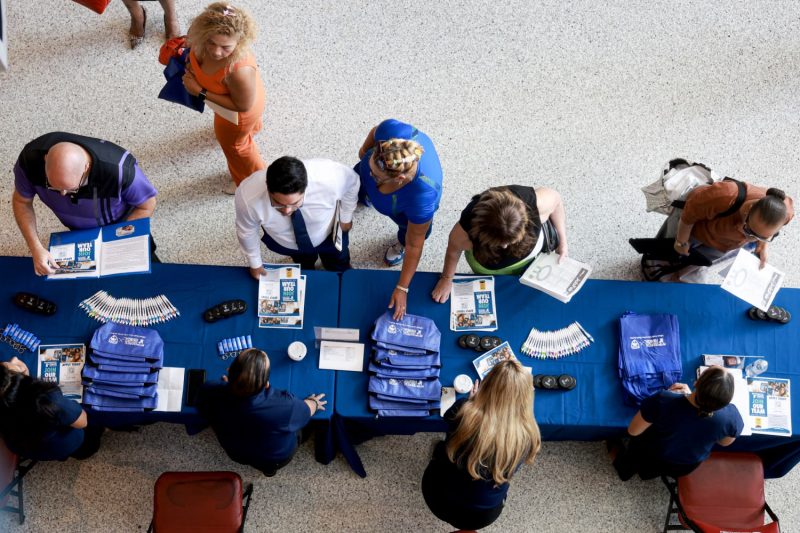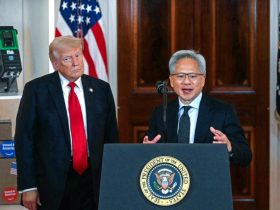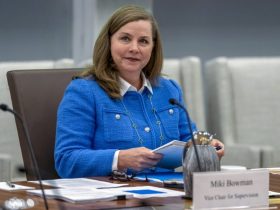A new labor market survey shows Americans have rarely felt more in need of new job opportunities — an indication of a more negative outlook about the economy despite other data that suggests a more stable picture.
The New York Federal Reserve’s latest poll of consumers found 28.4% of respondents were looking for a job — the highest reading since March 2014 and up from 19.4% a year ago. That includes both individuals already out of a job and ones currently employed but seeking new roles.
The readings, from the New York Fed’s thrice-annual Survey of Consumer Expectations Labor Market Survey, add to evidence that the U.S. economic outlook is worsening, even as some economists dial back their odds of a recession. While the unemployment rate remains relatively low at 4.3%, it is up from its post-pandemic low of 3.5%.
After a period of booming post-pandemic growth — tempered by surging inflation — signs continue to mount that the U.S. economy is entering a significantly softer period.
‘The vibes have gotten worse,’ said Guy Berger, director of economic research at the Burning Glass Institute, a labor research group.
He said the survey likely reflects respondents’ hearing about or having someone in their social network who’s experienced difficulty finding work.
‘It’s not like people should be panicked — this is not like 2008, or Covid — but, given an ordinary person’s balance of risks, it probably is a little higher,’ Berger said.
Expectations of losing one’s job also hit a record, the new survey found: The average expected likelihood of becoming unemployed rose to 4.4%, up from 3.9% a year ago and the highest level ever recorded for the survey, which goes back to 2014.
Despite those increasingly worrisome datapoints, economic forecasters say a full-blown recession, commonly defined as two-consecutive quarters of negative growth, remains unlikely.
Berger noted that layoffs remain low, and that the percentage of the population aged 25 to 54 who is employed, at 80.9%, remains at all-time highs. Overall labor force participation, or the share of the adult population that is employed or unemployed, has been stable for the past year at just under 63%. And the rate of job openings to positions remains above pre-pandemic highs at 4.9%.
‘The U.S. economy is doing just fine with steady growth,’ Torsten Slok, chief economist at Apollo Global Management financial group, wrote in a note to clients Saturday, citing additional ‘steady’ data in restaurant and travel bookings, as well as credit card and bank lending.
But Berger said there is no question about the economy’s ongoing slowdown.
“It’s hard to find data moving in right direction,” Berger said. “The best you can say is that some data are in a good spot and not getting worse. But most datapoints are on average moving slowly in wrong direction.”
The New York Fed said the increase in job searchers was most pronounced among respondents older than 45, those without a college degree, and those with an annual household income less than $60,000.
Rick Goins, a 64-year-old Houston-area resident with decades of communications experience, is among those who’ve encountered difficulty finding new work.
In fact, he has not had a full-time role since 2016, managing only to move between contractor gigs. During the pandemic, he secured a contractor role that lasted nearly two years, but that ended in February.
‘I’m not old enough to retire, and not old enough for Medicare,’ Goins told NBC News. ‘I want to keep my skills up … I’ve got a lot left in tank.’
He said he’d lost count of the number of times he’s been ‘ghosted’ by employers who fail to follow up in the middle of an interview process, and said he is concerned ageism is playing a role in his lack of success.
‘They want someone who’s 25 years old with 25 years of experience and who’ll take a $25 (an hour) salary,’ he quipped.








